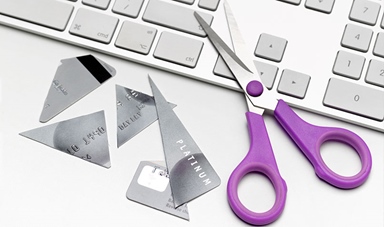Loading component...
At a glance
- New payment platforms and technologies are disrupting the payments space and lowering the demand for and use of credit cards.
- Experts expect competition in the payments sector to intensify as digital payment methods such as digital wallets and cryptocurrency enter the mainstream.
By Johanna Leggatt
There was a time, not so long ago, when Australians were hungry for credit cards.
It wasn’t just their instant purchasing power, but all the bells and whistles, too: the frequent flyer points, the luxe-looking platinum cards, the affiliate freebies and the discounts on partner products and services.
However, according to RateCity, Australians are reported to have closed almost 400,000 credit card accounts between March and June 2020, during the first wave of the COVID-19 pandemic.
In 2019, average Australian credit card debt was estimated to be A$3258 per card. However, since the pandemic hit early last year, Australians have, somewhat counter-intuitively, paid down A$4.2 billion dollars of the interest-accruing national credit card debt.
Credit card debt
Has the pandemic sounded the death knell for the credit card?
Steve Worthington, adjunct professor at Melbourne’s Swinburne University, says the product lifecycle of the credit card is certainly nearing its end, as more nimble payment models emerge and Australians access their super balances to stave off hardship during the recession.
“We are reducing the number of cards in our wallets for a variety of reasons, one of which is that, quite frankly, you can still pay large annual fees for credit cards and very high interest,” he says.
Many consumers are also cancelling their credit cards to improve their credit rating when applying for home loans, as mortgage providers assume all applicants have reached the full borrowing limit on all their cards, Worthington says.
In any case, credit card providers are taking steps to retain credit card customers, with Commonwealth Bank recently offering a new interest-free, flat-fee credit card, “CommBank Neo”, and National Australia Bank launching a “StraightUp Card”, which does not charge late payment fees, is interest free and annual fee free.
It is a slightly different story in Singapore, according to Greg Unsworth FCPA, digital business and risk assurance leader at PwC Singapore, who thinks credit card usage will remain “at a reasonable level, although there will be some decline”.
“I think people are still addicted to their cards – it’s the points, it’s the vouchers, it’s even the exclusivity of having certain cards,” Unsworth says.
Unsworth says credit cards remain popular in Singapore, despite the fact that most Singaporeans tend to be quite “strong savers”.
“I also think here it’s less about the fear of building up debt, and there’s less of a revolt, in some ways, against the banks and lending more broadly,” he notes.
“Here, the decline will be linked more to other payment options becoming available.”
CPA Australia podcast:
The alternatives
New payment platforms, such as Afterpay and Zip, are luring younger consumers away from credit cards with their ability to pay off goods in instalments, interest free.
While the buy now, pay later (BNPL) platforms make most of their income from commissions from merchants, they may still encourage people to spend beyond their means. Users are also liable for late fees if repayments are missed.
Unsworth expects competition in the payment space to heat up, with other payment methods gaining traction, in particular for the purchase of goods from physical stores while ensuring social distancing during COVID-19.
“The Singapore Government, in particular, is looking at developing a common standard, referred to as SQ QR,” Unsworth says.
"We are reducing the number of cards in our wallets for a variety of reasons, one of which is that, quite frankly, you can still pay large annual fees for credit cards and very high interest."
Chinese consumers have already embraced payment platforms such as Alipay and WeChat to purchase goods, with many payments already transacted through a QR code.
“Even people busking can have a QR code around their neck, and you put your phone against that and give a donation,” Worthington says.
Unsworth sees other digital payment methods disrupting the market as well, including digital wallets, Apple Pay and even cryptocurrency.
“We see examples in Singapore of large banks working on a crypto payment platform,” he says.
“I think as much as there are concerns about big banks, in some ways people will still trust them around security mechanisms better than some of the boutique start-ups.”
Cashless economy
According to the Reserve Bank of Australia’s 2019 Consumer Payment Survey, only 27 per cent of all consumer payments were made with cash, compared with 37 per cent in 2016 and 69 per cent in 2007.
Does this mean cash will soon become obsolete?
Not entirely, according to Worthington, who says that, while cash as an instrument of payment has declined, “as a store of value, it’s in the ascendancy”.
“There are 400 million A$100 notes still in issue in Australia, and that means an average of about 16 for every Australian,” he says.
Some of these notes are likely to be stashed “under the mattress” or perhaps used for nefarious purposes, Worthington says, but in any case, their mere existence indicates the psychological pull of physical money.
“This is especially true for people disconnected from technology, those living in rural areas or people with disabilities,” he says.
Unsworth also believes that cash will not disappear entirely.
“In the immediate term, I don’t think we will go completely cashless, but I think we will go cashless-enabled, if I can put it that way,” he says.

